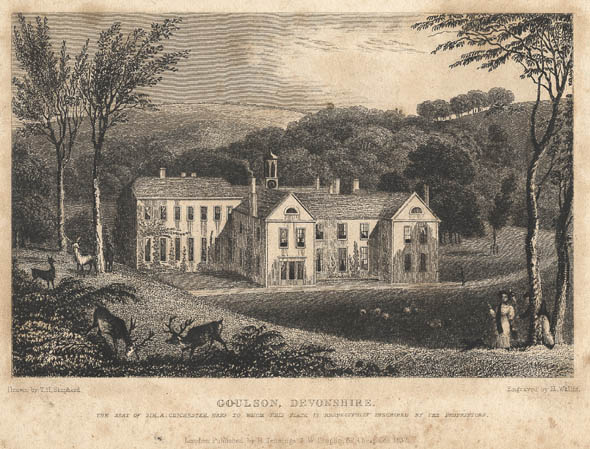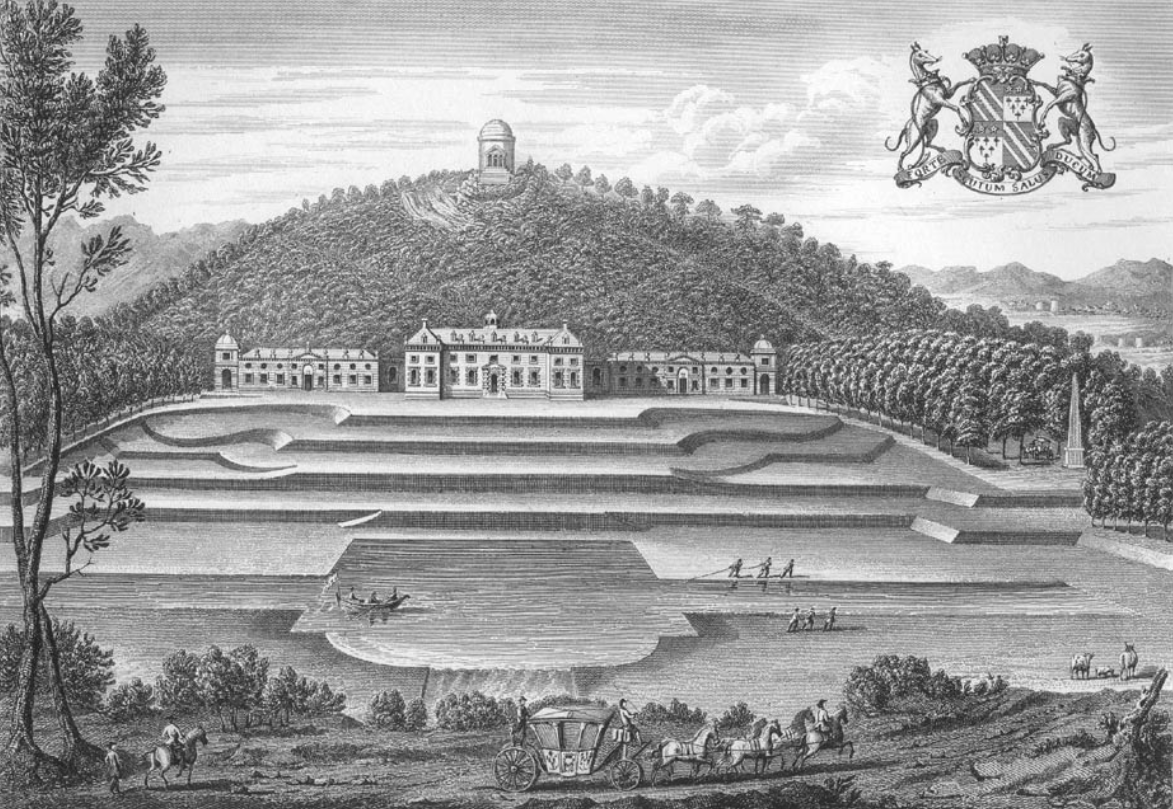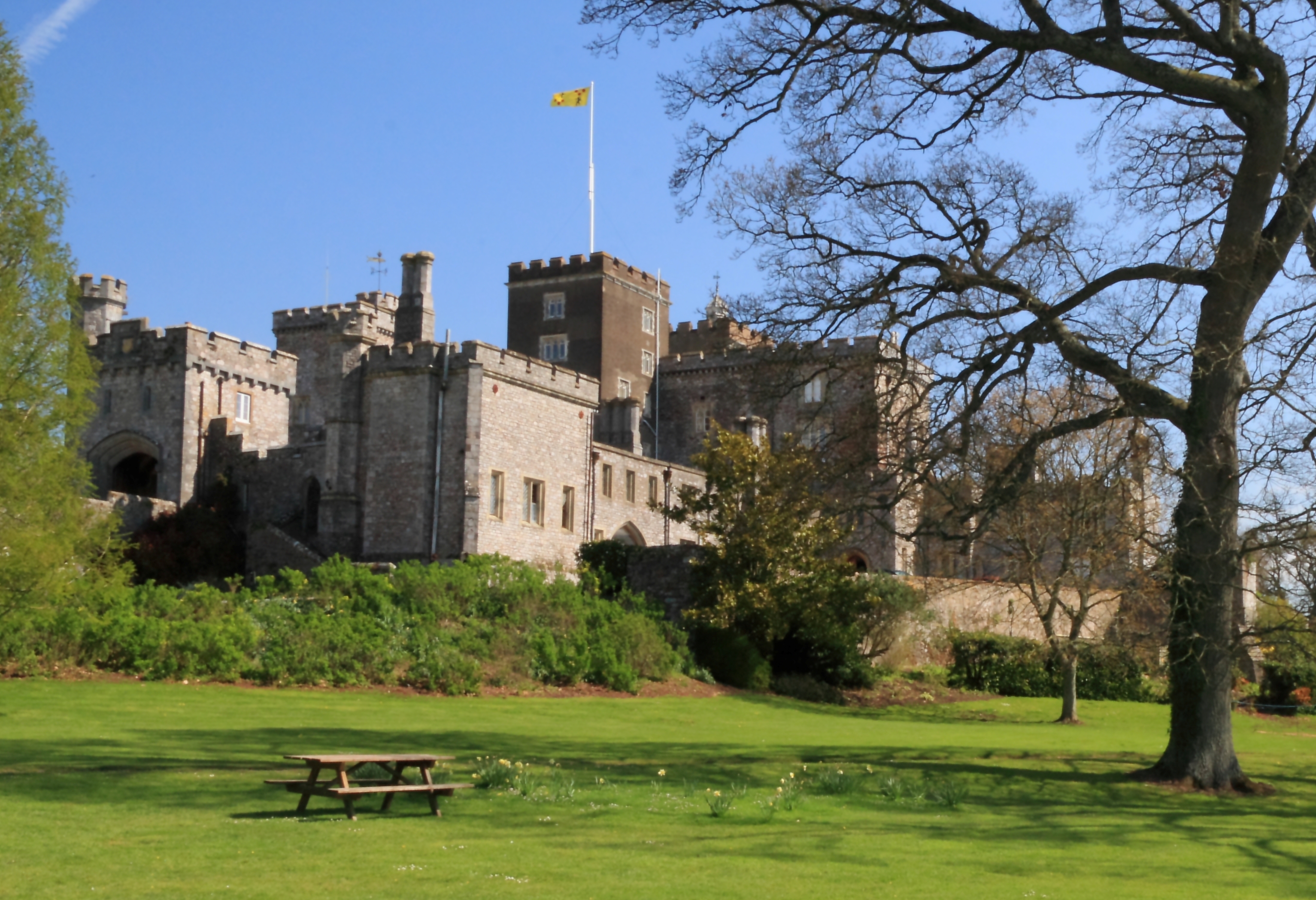|
Faithful Fortescue
Sir Faithful Fortescue (1585–1666), of Dromiskin in County Louth, Ireland, was Governor of Carrickfergus in Ireland, long the chief seat and garrison of the English in Ulster and was a royalist commander during the English Civil War. Origins Fortescue was born in 1585, the third son of John Fortescue (d. 1604) of Buckland Filleigh in Devon, but the first by his second wife Susannah Chichester, eldest daughter of Sir John Chichester (c. 1516/22-1569) of Raleigh in the parish of Pilton and of Youlston both in North Devon, a Member of Parliament, Sheriff of Devon in 1552 and 1557, by his wife Gertrude Courtenay, a daughter of Sir William Courtenay (1477–1535) of Powderham in Devon. One of Susannah's brothers was Arthur Chichester, 1st Baron Chichester of Belfast (1563–1625), who was to play such an influential role in the life of Faithful Fortescue. Although Faithful's father's second marriage is not mentioned in the Heraldic Visitation return made in 1620 by his elde ... [...More Info...] [...Related Items...] OR: [Wikipedia] [Google] [Baidu] |
Fortescue Arms
Fortescue may refer to: People * Fortescue (surname), a British surname ''Includes list of name-holders'' * Fortescue Ash (1882–1956), Anglican bishop in Australia * Fortescue Graham (1794–1880), British Royal Marines general Places * Fortescue, Missouri, United States, a village * Fortescue, New Jersey, United States * County of Fortescue, Queensland, Australia * Fortescue Bay, Tasmania, Australia * Fortescue River, Western Australia Titles * Earl Fortescue, a title in the Peerage of Great Britain * Fortescue baronets * Baron Fortescue of Credan, an extinct title in the Peerage of Ireland Other uses * Fortescue Metals Group, an Australian iron ore company * Fortescue National Football League, an Australian rules football league * Fortescue grunter ''(Leiopotherapon aheneus)'', a freshwater fish * Fortescue transformation for symmetrical components * Fortescue, protagonist of '' The House of Fortescue'', a 1916 silent film *''Centropogon australis The Eastern fortesc ... [...More Info...] [...Related Items...] OR: [Wikipedia] [Google] [Baidu] |
Youlston Park
Youlston Park also known as Youlston House is a privately-owned 17th-century mansion house situated at Shirwell, near Barnstaple, North Devon, England. It is a Grade I listed building. The parkland is Grade II listed in the National Register of Historic Parks and Gardens. The game larder and stables are individually listed Grade II. The pair of entrance lodges are listed Grade II*. The mediaeval origins of the house including a detached hall and a kitchen block were incorporated into the new house built in the late 17th century by Sir Arthur Chichester, 3rd Baronet, Member of Parliament for Barnstaple, who died in 1718. (He was a younger son of the first of the Chichester baronets There have been three baronetcies created for persons with the surname Chichester, one in the Baronetage of England and two in the Baronetage of the United Kingdom. Only the 1641 creation is extant. Chichester baronets, of Raleigh (1641) The ....) The south-facing two-storey entrance front has se ... [...More Info...] [...Related Items...] OR: [Wikipedia] [Google] [Baidu] |
Lord Chief Justice Of England And Wales
Lord is an appellation for a person or deity who has authority, control, or power over others, acting as a master, chief, or ruler. The appellation can also denote certain persons who hold a title of the peerage in the United Kingdom, or are entitled to courtesy titles. The collective "Lords" can refer to a group or body of peers. Etymology According to the Oxford Dictionary of English, the etymology of the word can be traced back to the Old English word ''hlāford'' which originated from ''hlāfweard'' meaning "loaf-ward" or "bread-keeper", reflecting the Germanic tribal custom of a chieftain providing food for his followers. The appellation "lord" is primarily applied to men, while for women the appellation "lady" is used. This is no longer universal: the Lord of Mann, a title previously held by the Queen of the United Kingdom, and female Lords Mayor are examples of women who are styled as "Lord". Historical usage Feudalism Under the feudal system, "lord" had a wid ... [...More Info...] [...Related Items...] OR: [Wikipedia] [Google] [Baidu] |
John Fortescue (judge)
Sir John Fortescue ( 1394 – December 1479) of Ebrington in Gloucestershire, was Chief Justice of the King's Bench and was the author of ''De Laudibus Legum Angliae'' (''Commendation of the Laws of England''), first published posthumously ''circa'' 1543, an influential treatise on English law. In the course of Henry VI's reign, Fortescue was appointed one of the governors of Lincoln's Inn three times and served as a Member of Parliament from 1421 to 1437. He became one of the King's Serjeants during the Easter term of 1441, and subsequently served as Chief Justice of the King's Bench from 25 January 1442 to Easter term 1460. During the Wars of the Roses, Henry VI was deposed in 1461 by Edward of York, who ascended the throne as Edward IV. Henry and his queen, Margaret of Anjou, later fled to Scotland. Fortescue remained loyal to Henry, and as a result was attainted of treason. He is believed to have been given the nominal title of Chancellor of England during Henry's e ... [...More Info...] [...Related Items...] OR: [Wikipedia] [Google] [Baidu] |
Earl Fortescue
Earl Fortescue is a title in the Peerage of Great Britain that was created in 1789 for Hugh Fortescue, 3rd Baron Fortescue (1753–1841), a member of parliament for Beaumaris and Lord-Lieutenant of Devon. History The Earls Fortescue descend from Sir Hugh Fortescue (1665–1719) of Filleigh and of Weare Giffard, both in Devon, whose first wife's first cousin had been 13th Baron Clinton and 5th Earl of Lincoln. In 1721 the abeyance of the ancient barony of Clinton was terminated in favour of his son Hugh Fortescue (1696–1751), who thus became the 14th Baron Clinton. On 5 July 1746, he was created Earl Clinton, with normal remainder to the heirs male of his body and Baron Fortescue, of Castle Hill in the County of Devon, with special remainder, failing heirs male of his body, to his half-brother Matthew Fortescue. Both titles were in the Peerage of Great Britain. Hugh Fortescue, 1st Earl Clinton (1696–1751), had no legitimate children and thus on his death the baro ... [...More Info...] [...Related Items...] OR: [Wikipedia] [Google] [Baidu] |
Castle Hill, Filleigh
Castle Hill in the parish of Filleigh in North Devon, is an early Neo-Palladian country house situated north-west of South Molton and south-east of Barnstaple. It was built in 1730 by Hugh Fortescue, 14th Baron Clinton (1696–1751), who was later created in 1751 1st Baron Fortescue and 1st Earl of Clinton, the son of Hugh Fortescue (died 1719), lord of the manor of Filleigh, Weare Giffard, etc., whose family is earliest recorded as residing in the 12th century at the manor of Whympston in the parish of Modbury in South Devon. The Fortescue family became major land owners, influential in British and West Country history. Castle Hill is a rare example in Devon of an 18th-century country mansion "on the grand scale". The house was substantially reconstructed following a disastrous fire in 1934. It was designated a Grade II* listed building in 1967. The park and gardens are Grade I listed in the National Register of Historic Parks and Gardens. Today the property is leased ... [...More Info...] [...Related Items...] OR: [Wikipedia] [Google] [Baidu] |
Wear Gifford
Wear is the damaging, gradual removal or deformation of material at solid surfaces. Causes of wear can be mechanical (e.g., erosion) or chemical (e.g., corrosion). The study of wear and related processes is referred to as tribology. Wear in machine elements, together with other processes such as fatigue and creep, causes functional surfaces to degrade, eventually leading to material failure or loss of functionality. Thus, wear has large economic relevance as first outlined in the Jost Report. Abrasive wear alone has been estimated to cost 1-4% of the gross national product of industrialized nations. Wear of metals occurs by plastic displacement of surface and near-surface material and by detachment of particles that form wear debris. The particle size may vary from millimeters to nanometers. This process may occur by contact with other metals, nonmetallic solids, flowing liquids, solid particles or liquid droplets entrained in flowing gasses. The wear rate is affected by fac ... [...More Info...] [...Related Items...] OR: [Wikipedia] [Google] [Baidu] |
Heanton Punchardon
Heanton Punchardon ( ) is a village, civil parish and former manor, anciently part of Braunton Hundred. It is situated directly east-southeast of the village of Braunton, in North Devon. The parish lies on the north bank of the estuary of the River Taw and it is surrounded, clockwise from the north, by the parishes of Braunton, Marwood, Ashford and across the estuary, Fremington. The population was 418 in 1801 and 404 in 1901. Its largest localities are Wrafton and Chivenor. The surrounding area is also an electoral ward with a total population at the 2011 census of 2,673. St Augustine's Church The parish is within Barnstaple Deanery for ecclesiastical purposes. The parish church is dedicated to St Augustine of Canterbury, who brought Christianity to England. It is a Grade I listed building and has three listed monuments in its churchyard. Parts date to about the 13th century. It has a bell-tower at the west end, with embattled parapet with crocketted corner pinnacles. Th ... [...More Info...] [...Related Items...] OR: [Wikipedia] [Google] [Baidu] |
Heraldic Visitation
Heraldic visitations were tours of inspection undertaken by Kings of Arms (or alternatively by heralds, or junior officers of arms, acting as their deputies) throughout England, Wales and Ireland. Their purpose was to register and regulate the coats of arms of nobility, gentry and boroughs, and to record pedigrees. They took place from 1530 to 1688, and their records (akin to an upper class census) provide important source material for historians and genealogists. Visitations in England Process of visitations By the fifteenth century, the use and abuse of coats of arms was becoming widespread in England. One of the duties conferred on William Bruges (or Brydges), the first Garter Principal King of Arms, was to survey and record the armorial bearings and pedigrees of those using coats of arms and correct irregularities. Officers of arms had made occasional tours of various parts of the kingdom to enquire about armorial matters during the fifteenth century. However, it was ... [...More Info...] [...Related Items...] OR: [Wikipedia] [Google] [Baidu] |
Arthur Chichester, 1st Baron Chichester
Arthur Chichester, 1st Baron Chichester (May 1563 – 19 February 1625; known between 1596 and 1613 as Sir Arthur Chichester), of Carrickfergus in Ireland, was an English administrator and soldier who served as Lord Deputy of Ireland from 1605 to 1616. He was instrumental in the development and expansion of Belfast, now Northern Ireland's capital. Several streets are named in honour of himself and his nephew and heir Arthur Chichester, 1st Earl of Donegall, including Chichester Street and the adjoining Donegall Place, site of the Belfast City Hall. Origins Arthur Chichester was the second son of Sir John Chichester (d.1569), of Raleigh, Pilton, in North Devon, a leading member of the Devonshire gentry, a naval captain, and ardent Protestant who served as Sheriff of Devon in 1550–1551, and as Knight of the Shire for Devon in 1547, April 1554, and 1563, and as Member of Parliament for Barnstaple in 1559. Arthur's mother was Gertrude Courtenay, a daughter of Sir William Cou ... [...More Info...] [...Related Items...] OR: [Wikipedia] [Google] [Baidu] |
Manor Of Powderham
Powderham Castle is a fortified manor house situated within the parish and former manor of Powderham, within the former hundred of Exminster, Devon, about south of the city of Exeter and mile (0.4 km) north-east of the village of Kenton, where the main public entrance gates are located. It is a Grade I listed building. The park and gardens are Grade II* listed in the National Register of Historic Parks and Gardens. It is situated on flat, formerly marshy ground on the west bank of the River Exe estuary where it is joined by its tributary the River Kenn. On the opposite side of the Exe is the small village of Lympstone. Starting with a structure built sometime after 1390, the present castle was expanded and altered extensively in the 18th and 19th centuries. The castle remains the seat of the Courtenay family, Earls of Devon. Origin of the name The manor of Powderham is named from the ancient Dutch word polder, and means "the hamlet of the reclaimed marsh-land". ... [...More Info...] [...Related Items...] OR: [Wikipedia] [Google] [Baidu] |




